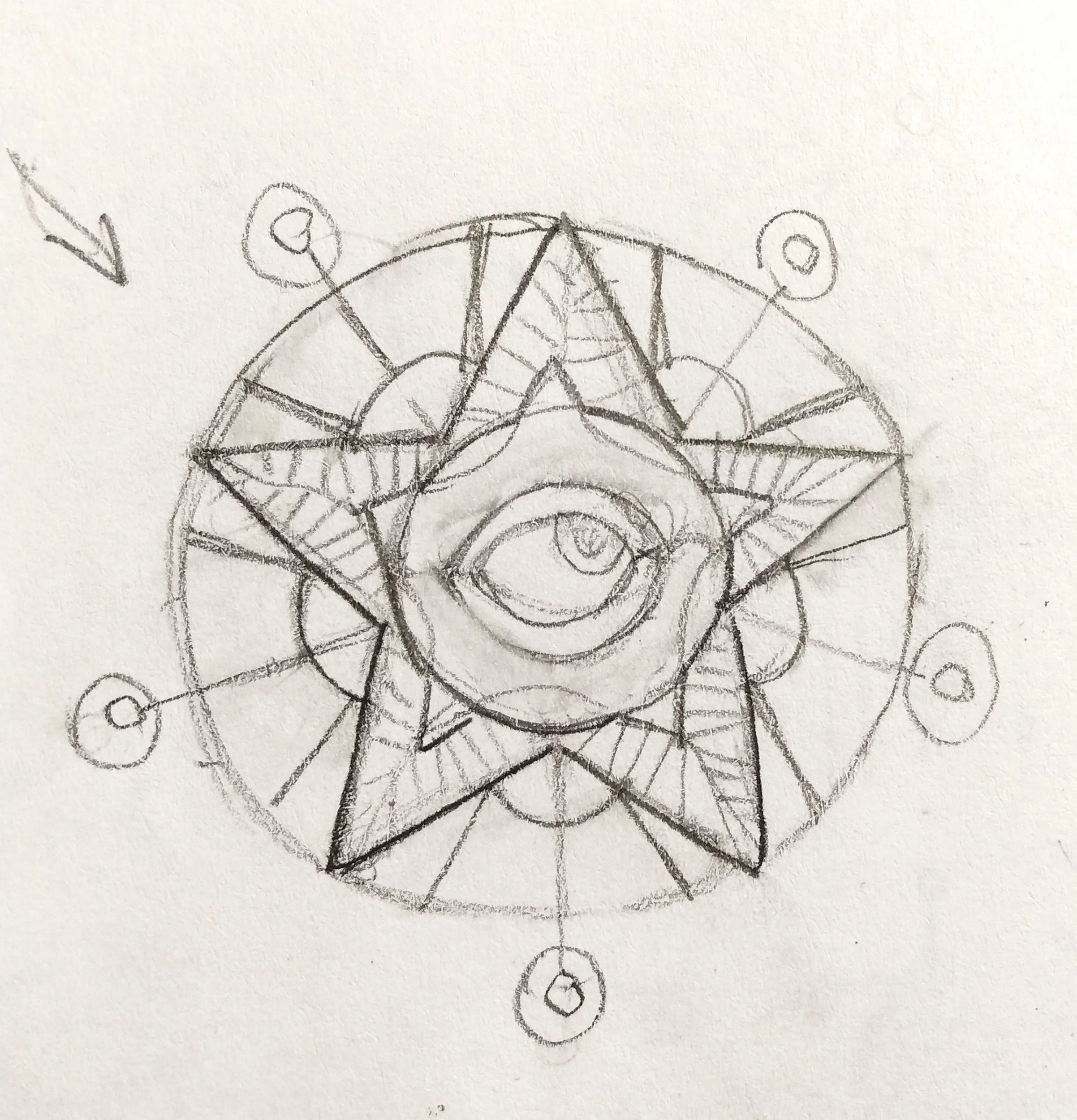A quick sketch for the sigil tile, Sanctuary.
People often ask me, sometimes with a nervous laugh or with genuine unease: “Why all the eyes?” They gesture at an eyeball mug, Sigil tile, or really anything I make. And I can feel the question just behind their curiosity: Is this watching me? Should I feel creeped out?
It’s not the first time I’ve heard it. There’s something uncanny about being seen, especially by an object. Our modern world has trained us to associate the all-seeing eye with surveillance—cameras in every corner, algorithms tracking our movements, a technological dystopia. So when someone encounters my pottery with its open, unblinking gaze, their first instinct is mistrust.
The symbol that many people call “creepy” today once meant something sacred. The Eye of Providence, sometimes nestled inside a triangle, sometimes with rays of light emanating from it, was never meant to terrify. It was meant to comfort. It symbolized something greater, wiser, more loving was keeping vigil. Not spying but watching over.
A Very Old Eye
The symbol of the Eye is far older than any of our modern anxieties. It reaches back to ancient Egypt, where the Eye of Horus represented healing, protection, and safety. In myth, Horus lost his eye in battle, and when it was restored, it became a powerful emblem that could watch over the living and the dead alike. The Eye wasn’t a threat but a shield.
Later, in early Christian art, a single radiant eye appeared within a triangle—what we now call the Eye of Providence. It represented the divine gaze of “God”. It wasn’t wrathful or punishing, but knowing and present.
Even in Freemasonry, where the Eye is still used as a symbol, it stands for guidance and spiritual vision: conscience illuminated from above.
Somewhere along the way, though, the symbol became distorted. It slipped into conspiracy theory and dystopia. The all-seeing eye atop the pyramid got tied up with shadowy secret societies. The same symbol that once meant “you are seen and cared for” began to mean “you are being watched and judged.”
The Eye in My Work
So when I place an eye on a mug, it’s not meant to unsettle but to honor the old, original meaning. To me, the Eye is a quiet companion. Sometimes, I think of it as a little spirit that looks both inward and outward. It sees the world, but it also sees me and you. It sees what you carry. It bears witness. And sometimes, all we need is to be seen.
We’ve grown leery of being seen, and maybe with good reason. But I want to reclaim the Eye—not as a tool of power, but as a symbol of presence and of care.
The Eye in my ceramic work is watching over you. It’s inviting you to see more deeply into yourself and others.
So if you ever find yourself face-to-face with one of my monster mugs, sigils, or apotropaions, and it’s looking back at you, don’t be afraid. It’s saying: I see you. I see all of you. And none of it scares me. You’re not being judged. You’re being recognized.
What symbols in your life feel like they’re watching over you?

